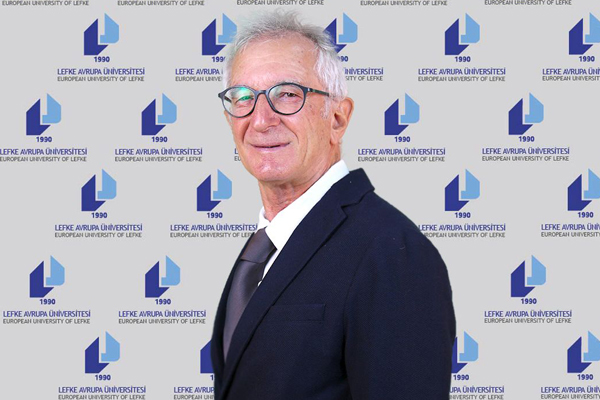EUL Academician A�?kada emphasized the importance of physical activity during Heart Health Week

European University of Lefke (EUL) School of Physical Education and Sports Director Prof. Dr. Caner A�?kada made statements due to �April 11�17 Heart Health Week� and drew attention to the importance of physical activity for a healthy heart.
Physical exercise strengthens many muscles and organs, especially the heart muscle
�Due to inactivity, the mortality rate due to heart diseases is increasing day by day, and the financial and moral burden on the health budget is increasing with the health problems caused by heart diseases,� said A�?kada, and he continued his statements as follows: We know that one of the most important ways to keep the heart healthy and strong is to do physical activity. In terms of physical activity and cardiovascular health, it was said that it was good to take 10,000 steps a day and that it would be beneficial to take that many steps every day. As a result of research, it has been accepted by the World Health Organization and the American Heart Association to take a minimum of 4400 steps a day instead of 10000 and to increase this to 7500. For this reason, people of all ages are advised to keep their hearts and circulatory systems healthy. This is roughly equivalent to walking at a moderate pace for 45-60 minutes a day. The World Health Organization recommends physical activity for people of all ages and emphasizes that moderate exercise should not be less than 150 minutes a week. It is stated that physical exercise strengthens many muscles and organs, especially the heart muscle. It is emphasized that physical exercises should pay attention to the cardiovascular system, the strength of the main muscle groups in our body, the flexibility of the main muscle groups, and the nutritional elements eaten and drunk, and that attention should be paid not to create excess fat weight.
In the statement, A�?kada continued as follows; According to the researches, the time spent sedentary among children aged 6�11 in Turkish society is 6 hours, and only 58.4% of this age group moves 30 or more times a day. It is shown that 69.8% of females and 41.4% of males in the 12-14 age group, 72.5% of females and 44.6% of males in the 15-18 age group, 76.6% of females and 69.5% of males in the 19-30 age group, 82.1% of females and 73.2% of males in the 31-50 age group, and 88.0% of females and 83.7% of males in the 75+ age group have never exercised. In this situation, Turkish society is one of the most sedentary countries in Europe and one of the top three countries with the worst physical activity and fitness levels. As such, the mortality rate of the Turkish population from heart diseases will tend to increase, and health budgets will gradually increase. What is more important is that inactivity will increase and lead to a more sedentary and less dynamic future generation. We observe that one of the most sedentary groups in our society is young people attending university (72%). It is seen that people�s physical activity levels increase; it is possible with the work they do. However, it is seen that the most active group is the employees. It is seen that our society is the most sedentary in the free time period, and that the cultural habits of the society do not include the habit of �physical activity�.
A�?kada stated that the World Health Organization and Sports Physicians recommend exercising for about 30 minutes every day and said, �While 2-3 physical activities per week were recommended in the 1990s, in recent years it is recommended to exercise every day. In terms of exercise, attention is drawn to walking, running, skiing, cycling, swimming, fitness, aerobics, tennis, soccer, basketball, and many other different exercises. Therefore, physical education teachers and coaches have a great job to do. Our universities should carry out programs to introduce the habit of exercise and sports to their young population. We should raise awareness among university students about a healthy heart and vascular structure, and we should establish the awareness and culture that heart health depends on physical activity.�
